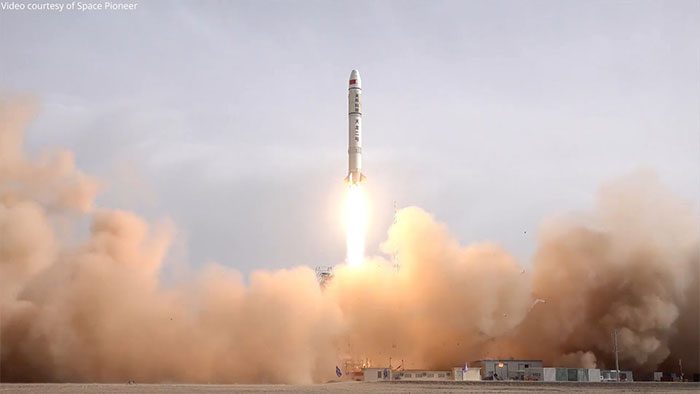The Tianlong-2 rocket from the Chinese startup Space Pioneer successfully launched for the first time in April, using coal-based aviation kerosene as fuel.
Launch of the Tianlong-2 rocket on April 2.
Space Pioneer’s new fuel performs as well as aviation kerosene derived from crude oil. According to reports by SCMP on May 25, some aerospace experts noted that it provides a safe and efficient energy source for China’s aerospace sector, which has been facing fuel shortages.
Rocket engines require premium fuel, and traditional rocket kerosene can only be refined from high-quality crude oil through a complex extraction process. Such fuel supplies have always faced challenges as China has limited oil reserves and generally low-quality oil fields.
The first launch of a rocket powered by coal-based aviation kerosene is considered a groundbreaking achievement in the aerospace industry.
“The success of this new research expands the fuel supply for China’s aerospace industry, ensuring national energy security and laying a solid foundation for the launch of next-generation rockets,” reported China Space News, a publication of the China Aerospace Science and Technology Corporation (CASC).

The rocket using coal-based fuel is regarded as a groundbreaking achievement in the aerospace industry.
The coal-based aviation kerosene was developed through collaboration among several Chinese state-owned companies, including the 165th Research Institute of CASC, the Liquid Coal Chemical Company of the China Energy Engineering Group, and the Ningxia Coal Industry Group.
After years of experimentation, the research team discovered that aviation kerosene produced from the liquefaction of coal exhibits similar properties to that made from crude oil. This discovery offers a promising energy solution for the aerospace sector, given China’s abundant coal resources and the ongoing advancement of coal-to-liquid technology.
“After years of relentless efforts, the institute has successfully developed coal-based aviation kerosene and established a production line with an annual output of 5,000 tons (estimated to supply over 30 flights). By 2025, the annual output is expected to increase to approximately 30,000 tons,” stated Fu Quanjun, deputy director of the 165th Research Institute.
On April 2, after more than 300 engine tests and over 60,000 seconds of testing time, the Tianlong-2 rocket successfully launched with the new fuel. The YF-102 liquid fuel engine on Tianlong-2, developed by the Sixth Aerospace Technology Institute, is the standard engine for China’s next-generation launch vehicles. The Long March 5, 6, and 7 rockets all utilize engines from this series, meaning they can also use coal-based aviation kerosene as fuel.


















































